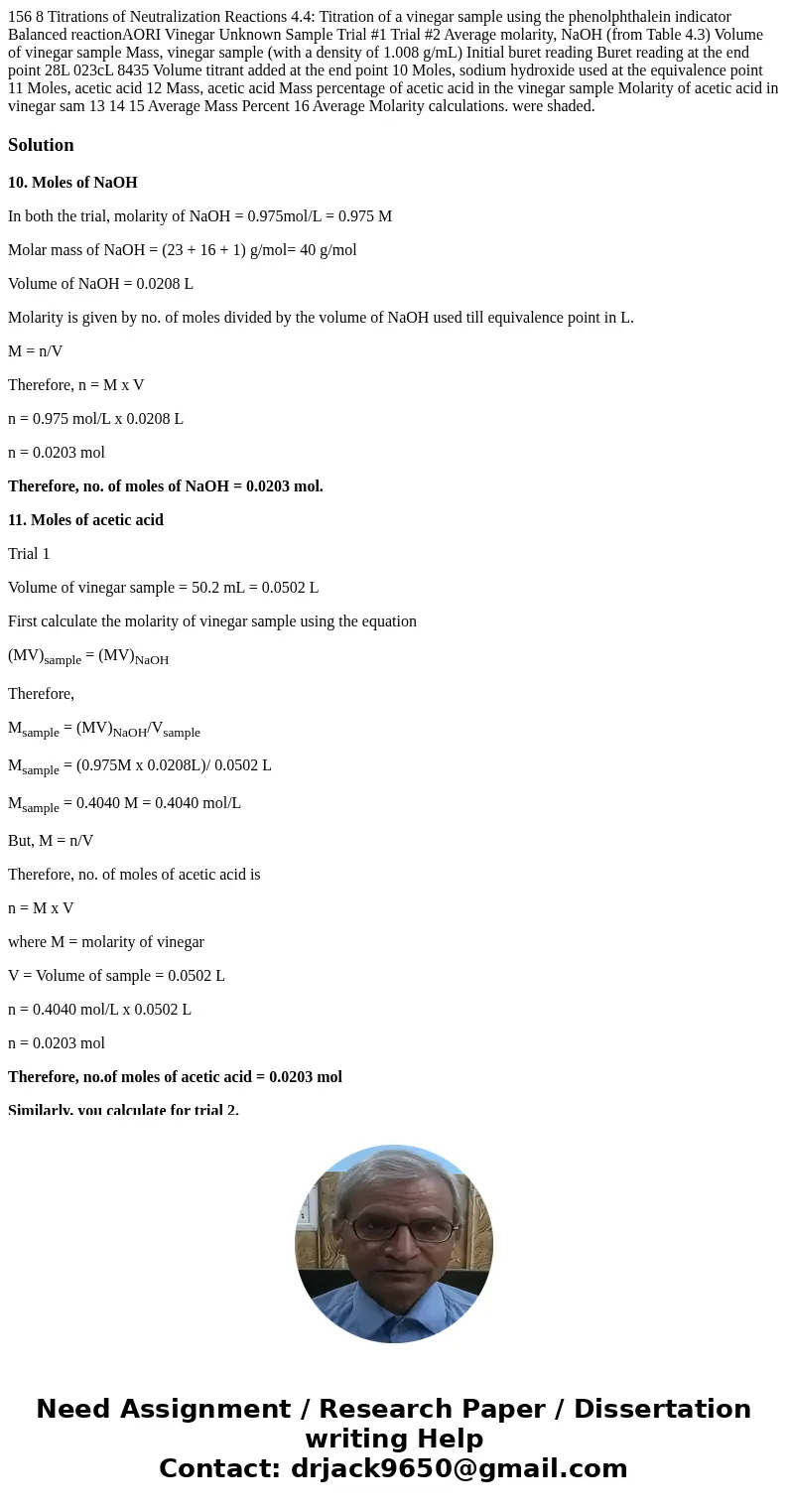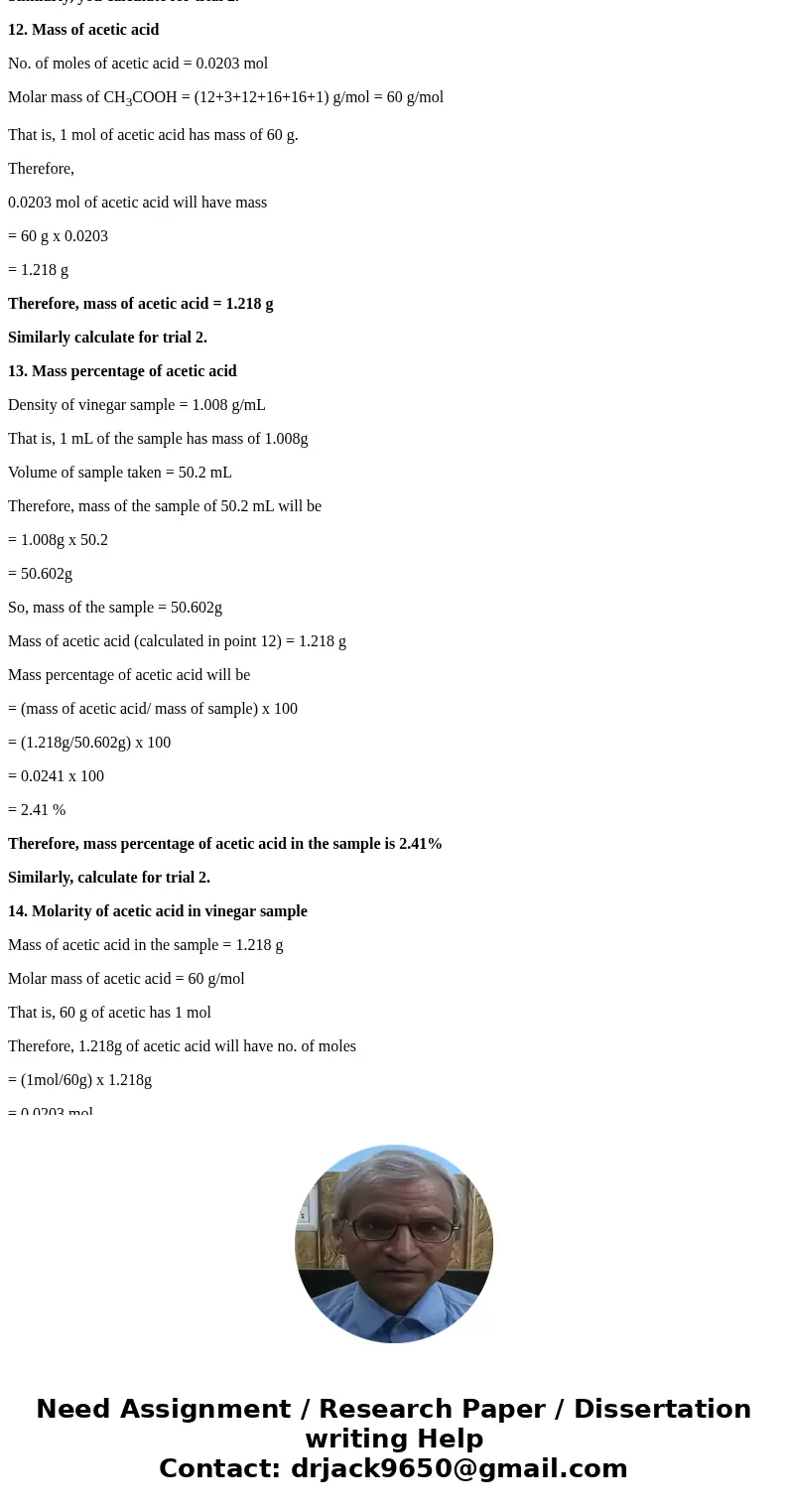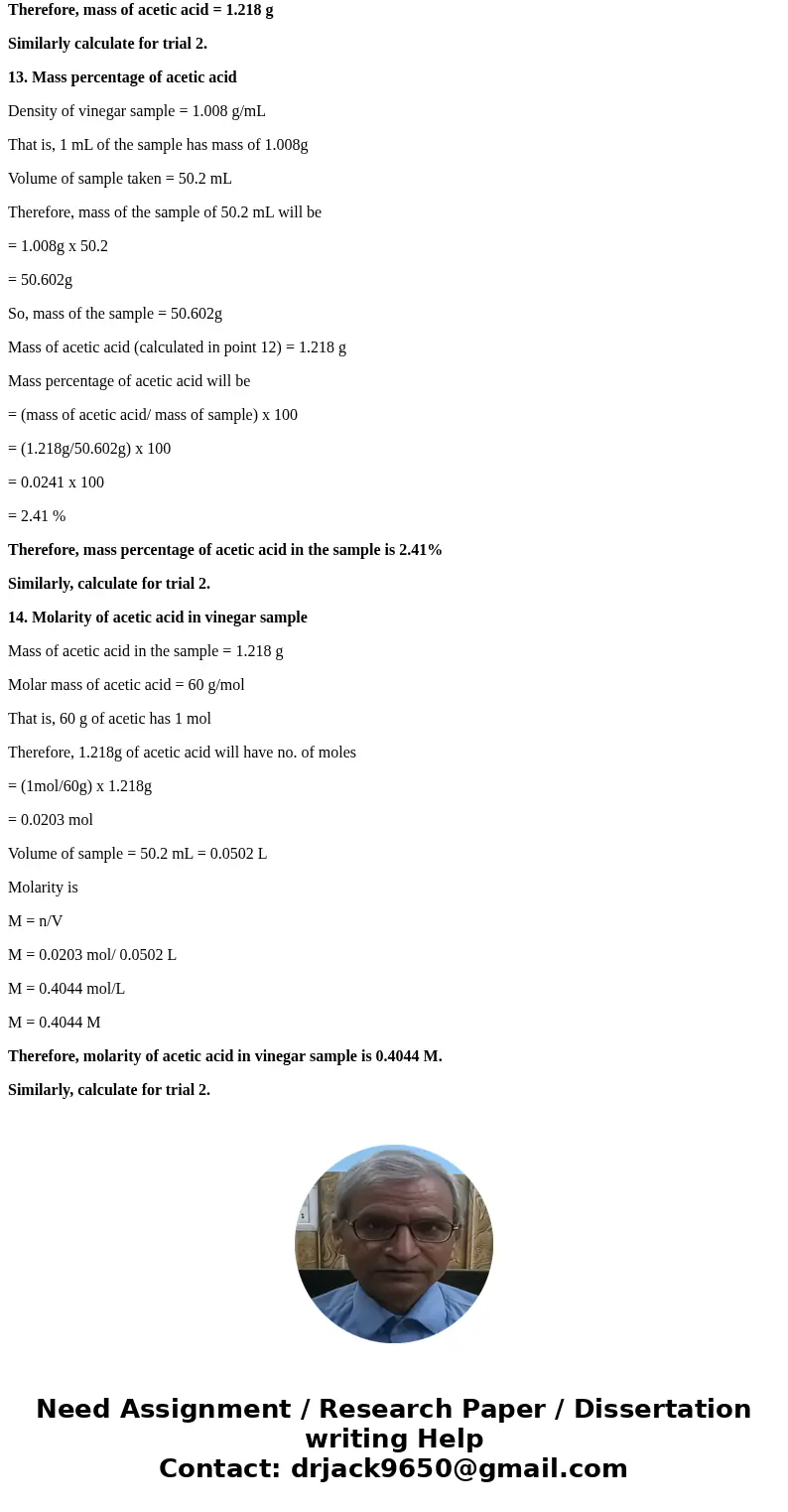156 8 Titrations of Neutralization Reactions 44 Titration of
Solution
10. Moles of NaOH
In both the trial, molarity of NaOH = 0.975mol/L = 0.975 M
Molar mass of NaOH = (23 + 16 + 1) g/mol= 40 g/mol
Volume of NaOH = 0.0208 L
Molarity is given by no. of moles divided by the volume of NaOH used till equivalence point in L.
M = n/V
Therefore, n = M x V
n = 0.975 mol/L x 0.0208 L
n = 0.0203 mol
Therefore, no. of moles of NaOH = 0.0203 mol.
11. Moles of acetic acid
Trial 1
Volume of vinegar sample = 50.2 mL = 0.0502 L
First calculate the molarity of vinegar sample using the equation
(MV)sample = (MV)NaOH
Therefore,
Msample = (MV)NaOH/Vsample
Msample = (0.975M x 0.0208L)/ 0.0502 L
Msample = 0.4040 M = 0.4040 mol/L
But, M = n/V
Therefore, no. of moles of acetic acid is
n = M x V
where M = molarity of vinegar
V = Volume of sample = 0.0502 L
n = 0.4040 mol/L x 0.0502 L
n = 0.0203 mol
Therefore, no.of moles of acetic acid = 0.0203 mol
Similarly, you calculate for trial 2.
12. Mass of acetic acid
No. of moles of acetic acid = 0.0203 mol
Molar mass of CH3COOH = (12+3+12+16+16+1) g/mol = 60 g/mol
That is, 1 mol of acetic acid has mass of 60 g.
Therefore,
0.0203 mol of acetic acid will have mass
= 60 g x 0.0203
= 1.218 g
Therefore, mass of acetic acid = 1.218 g
Similarly calculate for trial 2.
13. Mass percentage of acetic acid
Density of vinegar sample = 1.008 g/mL
That is, 1 mL of the sample has mass of 1.008g
Volume of sample taken = 50.2 mL
Therefore, mass of the sample of 50.2 mL will be
= 1.008g x 50.2
= 50.602g
So, mass of the sample = 50.602g
Mass of acetic acid (calculated in point 12) = 1.218 g
Mass percentage of acetic acid will be
= (mass of acetic acid/ mass of sample) x 100
= (1.218g/50.602g) x 100
= 0.0241 x 100
= 2.41 %
Therefore, mass percentage of acetic acid in the sample is 2.41%
Similarly, calculate for trial 2.
14. Molarity of acetic acid in vinegar sample
Mass of acetic acid in the sample = 1.218 g
Molar mass of acetic acid = 60 g/mol
That is, 60 g of acetic has 1 mol
Therefore, 1.218g of acetic acid will have no. of moles
= (1mol/60g) x 1.218g
= 0.0203 mol
Volume of sample = 50.2 mL = 0.0502 L
Molarity is
M = n/V
M = 0.0203 mol/ 0.0502 L
M = 0.4044 mol/L
M = 0.4044 M
Therefore, molarity of acetic acid in vinegar sample is 0.4044 M.
Similarly, calculate for trial 2.



 Homework Sourse
Homework Sourse